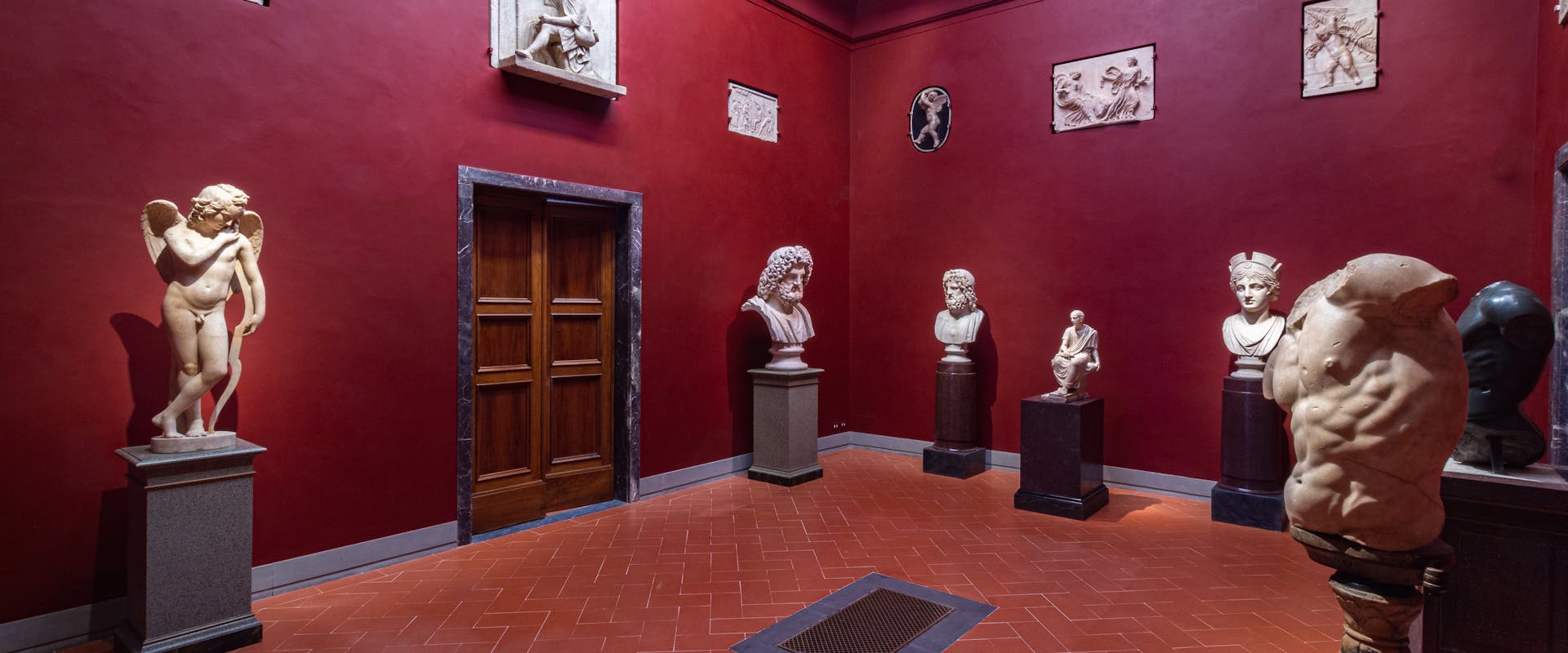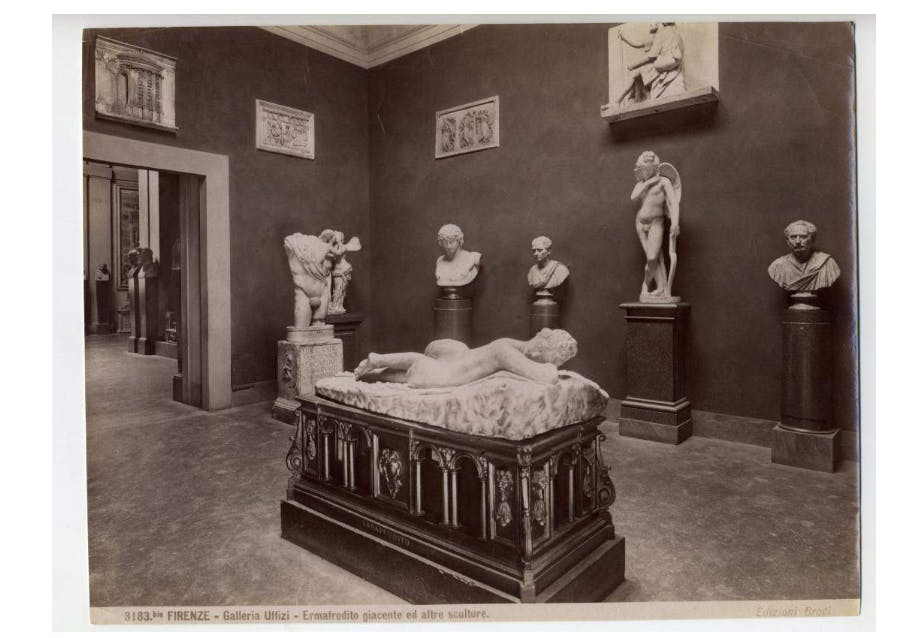The Uffizi Galleries bring the Hall of Ancient Marbles back to life
A true identity space of the museum, it housed in the 19th century some of the most famous sculptures of the grand ducal collection and the Roman reliefs embedded in the walls that made it unique: reconstructed as it once was, it is now visible to all.
After 200 years, one of the most famous spaces of the Uffizi Gallery dedicated to classical antiquity, the Cabinet of Marbles, containing a selection of the most important Roman sculptures of the Medici collection and made unique by the series of reliefs embedded in its walls, has been resurrected and is now visible to all in its original form. The current reorganization aims to restore the charm the hall had at the time of its inauguration, with the series of twelve reliefs being placed in their original positions, precisely reassembling the marble frieze that made this antiquarian and museal space unique and unmistakable.
Among the various exhibited works are masterpieces such as the two reliefs with the sales of pillows and cloths from a Flavian-era tomb on the Esquiline Hill, the figure of a seated shepherd, originally part of a monumental nymphaeum from the early Imperial age, and the accurate reproduction of the Temple of Vesta flanked by the Ruminal Fig Tree. Also captivating is the depiction of Zeus Ammon, a syncretistic deity of the Hellenistic-Roman age, which was part of the sculptural decoration of the Forum of Augustus in Rome and is now restored to public view after a long period in storage.
Aside from the walls, the Cabinet of Marbles was, and today returns to being, a true treasure of antiquities, like the nine marbles arranged along the perimeter of the room. These are works that have long been an integral part of the historical setup of this environment, such as the splendid green basalt torso from Wadi Hammamat, perhaps the best replica of Polykleitos' Doryphoros to date, or the Spinario, one of the seven known copies of this unique late Hellenistic sculptural type, whose most famous replica is now preserved in the Capitoline Museums in Rome.
The space also houses some sculptures that have not been exhibited for a long time: among these, the statuette depicting the seated Menander, one of only three known copies of this iconographic model developed in Athens in the 3rd century BC, and the group of Hermaphrodite and Pan, a lively composition from the early Imperial period probably created for garden decoration.
The history of the hall
Until 1825, the location where the Cabinet of Marbles now stands was an expansive terrace built in 1658 under the reign of Ferdinand II. The need for new exhibition spaces, particularly pressing at the beginning of the 19th century following the acquisition of the large collection of Egyptian antiquities from Chancellor Nizzoli, led to the decision to cover the terrace area, significantly expanding the museum's layout. The vast space thus obtained was then divided into two "cabinets," one dedicated to Egyptian antiquities and one entirely devoted to classical sculpture, centered around the famous statue of the Sleeping Hermaphrodite. Illuminated by a large skylight, following the most modern museological criteria of the time, the new hall perfectly suited housing a selection of the most important and famous marbles present in the Uffizi.
Special emphasis was given to the series of twelve reliefs, almost all of Roman era, arranged high on the four walls, crowning the series of busts and full-figure sculptures displayed around the perimeter. This spectacular arrangement, documented by Alinari photos as late as the 1880s, was radically altered at the beginning of the 20th century, and was ultimately dismantled in the mid-20th century.
Director of the Uffizi Galleries Simone Verde:
“The reorganization of this iconic space in Uffizi history revives the spatial conception of the museum as envisioned in the 18th century by the great art historian and scholar Luigi Lanzi: a painting itinerary centered on the Renaissance arts, which, if displayed in long corridors, were in turn punctuated by side cabinets, that is, rooms 'tangential' to the itinerary itself, housing relics of the ancient world to testify to the artistic and cultural models that led to the revival of classicism in Renaissance aesthetics. In this logic, the most important cabinet was undoubtedly the one we are re-inaugurating today: not only for the beauty of the sculptures and marbles housed there (irrefutable proof of the taste and scope of the Medici collection of antiquities), but especially for the recovery of the models and ideals of classicism represented there in the most majestic form accessible to European antiquarians.”
Curator of Classical Antiquities of the Uffizi Galleries Fabrizio Paolucci:
“The new setup of the relief hall marks the return of a prestigious space on the main floor to its ancient owners: the classical sculptures of the grand ducal collection. This space, created in 1825 to exclusively house ancient marbles, is now repopulated with a refined selection of reliefs, busts, and full-figure sculptures, including absolute masterpieces such as the basalt torso of the Doryphoros or the reliefs with scenes of selling pillows and fabrics. Their arrangement also follows, in part accurately reproducing, the original layout, restoring to visitors the charm and atmosphere of the years when the Uffizi was known throughout Europe as the 'Gallery of Statues' par excellence.”
The new arrangement of the Cabinet of Marbles was unveiled at the event of 31 July 2024.

